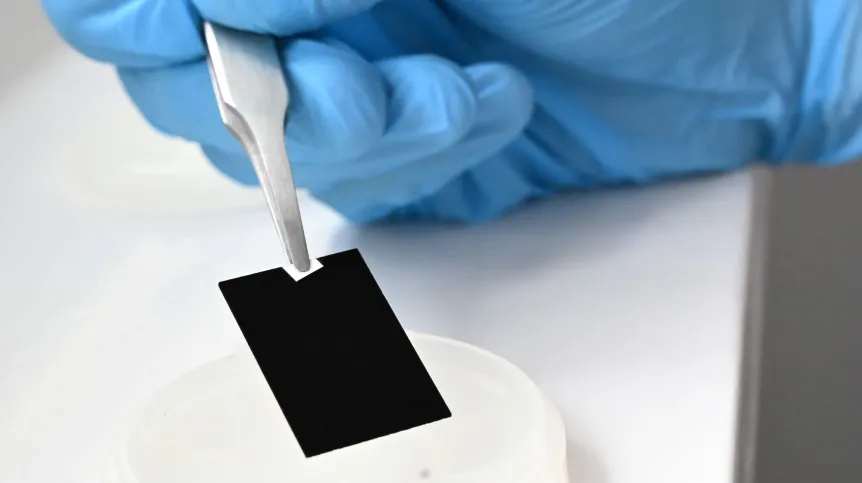
The development of new passive heating and cooling materials that can significantly reduce energy consumption in construction is the objective of the BIOTHERM project led by Łukasiewicz - Institute of Microelectronics and Photonics. The inspiration for scientists are black butterfly wings.
The species in question is the Magellan birdwing (Troides magellanus). 'Its wings absorb light better than many modern materials developed by humans. Nature has outpaced us by millions of years, now we are trying to keep up. These wings show 98% absorption of visible light, which means that they almost completely absorb the radiation in this range falling on them. Such a high level of absorption is the result of a complex micro and nanostructure of the surface, which acts as a natural +light trap+', we read in a press release sent by the promotion office of Łukasiewicz - Institute of Microelectronics and Photonics.
Interestingly, these butterflies have extremely black and very bright, almost white colours. 'Their unusual colours are not the result of pigment, but of microstructures - special patterns on their wings. These structures are responsible for their ability to strongly absorb (in the case of very black) or strongly reflect sunlight (in the case of very bright), which is crucial for the effective regulation of the body temperature of these animals', the researchers explain.
And it is these butterflies that inspired the team of researchers led by Michał Borysiewicz, PhD. The research will involve experts in various fields, including nanomaterials, thermoelectrics, physics, zoology and optical modelling.
Their main goal is to find relationships between structures and thermal properties of nature-inspired, inorganic, very black and very white, thin-film materials, in relation to their natural counterparts found in insects.
For researchers, this will be the starting point for developing thin-film, bioinspired coatings: light-absorbing (like the wings of black butterflies, ideal for passive heating) and light-reflecting (like the shells of white insects, effectively supporting cooling).
Researchers also want to better understand the evolution of insects by using the newly developed materials to make analogues of butterfly wings in the laboratory.
According to the scientists, in the future the newly developed coatings may cover parts of buildings or devices, and partially replace air conditioning or heating systems with high energy consumption - without the need for external power supply.
Scientists plan to produce new materials by magnetron sputtering, in order to obtain similar structures to those found in insects - with the same optical and thermal properties. They explain in the release that, magnetron sputtering is a modern technique in which a gas (e.g. argon) is introduced into the interior of a special chamber, and then the material used to obtain the coating is placed in the chamber. As a result of the magnetic field and voltage, gas ions 'hit' this material, atoms are 'knocked off' its surface and deposited on the coated surface, creating a very thin, uniform layer.
According to the release, light reflection measurements will then be carried out and thanks to these experimental data, supplemented with theoretical data, it will be possible to determine the properties of the structures. Finally, thermoelectric modules will be prepared, covered with the newly developed layers and then exposed to solar radiation, in order to qualitatively and quantitatively determine whether the new coatings absorb or reflect solar heat.
The project is being carried out by an interdisciplinary consortium: nanomaterials and thermoelectrics experts from Łukasiewicz - Institute of Microelectronics and Photonics; physicists from the Faculty of Physics of the Warsaw University of Technology, who specialise in the characterization of structures; insect zoologists from the Centre for Environmental Education of the Jagiellonian University; and optical modelling experts from the University of Chicago and the Karlsruhe Institute of Technology. (PAP)
akp/ zan/













